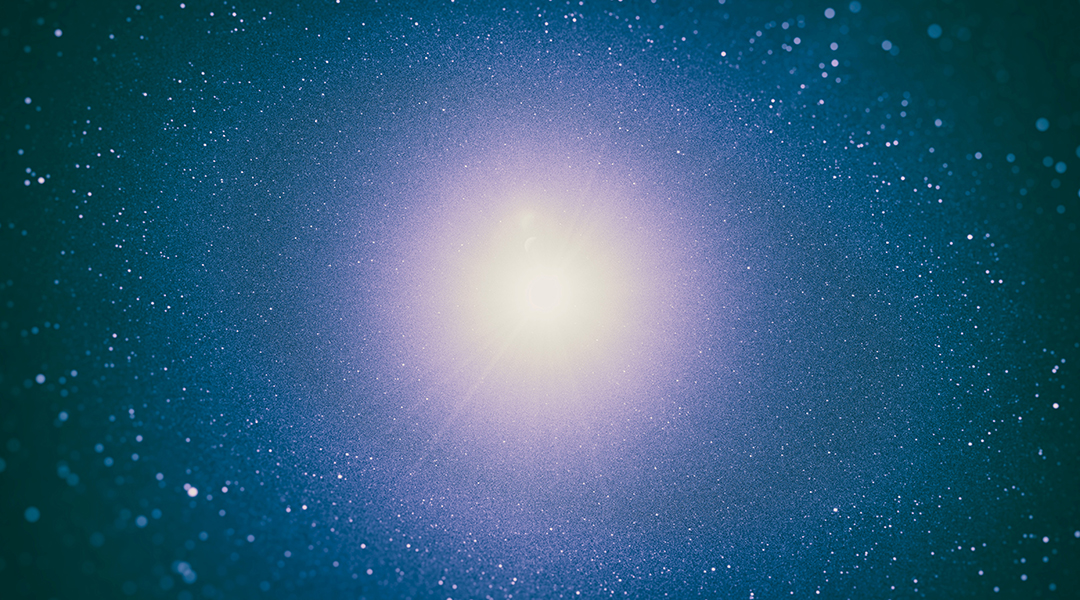Neutron stars are among the most extreme and bizarre objects in the Universe. Each of these celestial bodies, which are the remnants of massive stars that ended their lives in supernova explosions, has a mass greater than the mass of our Sun.
Given that their radius is only a few kilometers, this makes them about as dense as atomic nuclei. Compared with our planet, both the density and the gravitational pull on the surface of a neutron star are one hundred trillion times greater than on Earth.
Despite scientists’ extensive knowledge of their internal structure and behaviors, some puzzles remain in their physics, including the mystery surrounding the properties of neutron star radiation.
Binary systems with a neutron star
Observation made since the late 19th century indicate that when a neutron star exists as part of a binary system, it can gravitationally attract matter from its companion star onto its own surface. As this matter is accelerated to tremendous velocities as a result of the incredible gravity of the neutron star, it emits powerful electromagnetic waves that exert an outward pressure on the accelerated matter.
When the radiation pressure from the infalling matter becomes intense enough, it can overwhelm the gravitational force of the neutron star, preventing more matter from reaching its surface. This limit on the maximum amount of infalling material and the resulting radiation power (or how much energy it can emit) is known as the Eddington limit.
But here’s the problem: researchers have repeatedly observed neutron stars whose emissions exceed the Eddington limit by orders of magnitude.
M82 X-2
To study this phenomenon in detail and understand the nature of the contradiction between theory and experiment, an international team of researchers led by Matteo Bacetti analyzed data from eight years of observations made by NASA’s space-based Nuclear Spectroscopic Telescope Array of a binary system known as M82 X-2.
The system is located around 12 million light years from Earth and is exceptionally bright — its luminosity is about ten million times that of the Sun and exceeds the Eddington limit by about a hundred times. It consists of a star that has roughly eight times the mass of our Sun and a neutron star with a mass of 1.4 solar masses, rotating every 1.37 seconds and revolving around its companion every 2.5 days.
The researchers aimed to determine how much matter the neutron star was accreting or stealing from its neighbor by studying changes in the neutron star’s orbital period. They compared their observational findings with the same quantity derived from its luminosity to ensure that they agreed. The team confirmed the calculated parameters of the system matched observational data, suggesting the Eddington limit had indeed been broken in this binary system.
In their study, the physicists not only confirmed the violation of the Eddington limit but also proposed a solution to the problem. They noted that typically when scientists calculate the pressure exerted on the accreting matter it is assumed that there is no magnetic field. However, just like Earth, neutron stars also possess magnetic fields that can be incredibly strong, and which according to quantum mechanics, should reduce the radiation’s pressure on the matter. This would thus allow larger amounts of infalling material than previously assumed to overcome this pressure, raising the Eddington limit.
The physicists concluded that if the neutron star in M82 X-2 has a strong enough magnetic field (billions of times stronger than what could ever be made in a laboratory on Earth), the Eddington limit rises so much that the contradiction between observations and theory disappears.
“These observations let us see the effects of these incredibly strong magnetic fields that we could never reproduce on Earth with current technology,” said Bachetti, an astrophysicist at the National Institute of Astrophysics’ Cagliari Observatory in Italy, in a press release. “This is the beauty of astronomy. Observing the sky, we expand our ability to investigate how the Universe works. On the other hand, we cannot really set up experiments to get quick answers; we have to wait for the Universe to show us its secrets.”
Although the group found a possible solution to the paradox, to confirm their hypothesis, further observations of other Eddington-breaking neutron stars are needed to make sure that this elevated luminosity is always accompanied by this phenomenon of matter transfer from a companion star.
Fortunately, many missions, such as the High-Energy X-ray Probe, the X-ray Timing and Polarimetry Mission, and the Spectroscopic Time-Resolving Observatory for Broadband Energy X-rays, are currently under development, which will help to more accurately measure the parameters of a large number of ultra-luminous neutron stars to determine whether the problem has been solved or the paradox still persists.
Reference: Matteo Bachetti et al, Orbital Decay in M82 X-2, The Astrophysical Journal (2022). DOI: 10.3847/1538-4357/ac8d67
Feature image credit: Rodion Kutsaiev on Unspash

















